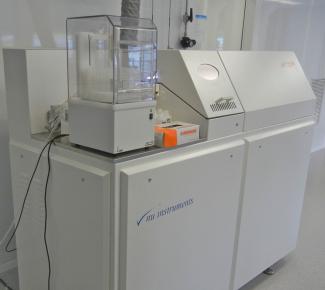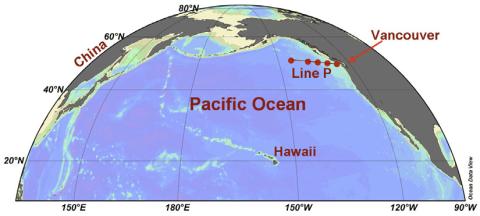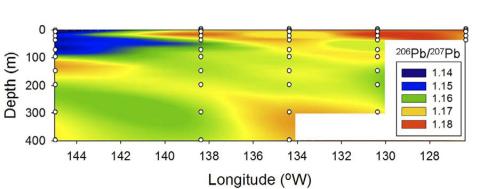Applications of the Nu AttoM at nUBC
By Jason McAlister, Kristin Orians and Dominique Weis
Billions of litres of seawater undulate against our shores. Ferry rides to islands penetrating the sea surface are set against the backdrop of a seemingly endless ocean horizon. We enjoy days at the beach, and feast on salmon, halibut, and shellfish.
Perhaps you have stared off over the ocean, considered the origins of these waters, pondered the processes sustaining life within the three dimensional structure of our ocean, or contemplated the role of the ocean in climate change. Oceanography explores these issues, and much of our knowledge of the sea results from interpretation of data acquired in the laboratory.

The work conducted in the nUBC facility at PCIGR, in partnership with Nu Instruments and employing the Nu AttoM high-resolution mass spectrometer (HR-ICP-MS) (Fig. 1), reports oceanographic isotopic ratios of lead (Pb) and supports more routine oceanographic study of Pb isotopes based on smaller seawater sample volume requirements. Results identify regional and atmospheric sources of elements important to understanding ocean food webs and processes inherent to climate change.
Seawater contains every naturally occurring chemical element, and while the characteristically salty ocean is dominated by familiar elements comprising table salt, low-concentration trace elements such as aluminum (Al), gallium (Ga), iron (Fe), copper (Cu), and Pb reveal much more regarding biogeochemical processes occurring in the ocean. Lead is a particularly interesting element, as sources can be determined by distinct isotopic ratios, providing identification analogous to our fingerprints.
Analysis of trace metals in the ocean is a challenging endeavour: accurate measurements have been made for only ~30 years. Large sample volumes (10 L) required for early analysis made global studies difficult. Analytical advances have allowed increasingly routine analysis of elements such as Fe and Al that use smaller volumes (5–25 mL) of seawater. However, Pb isotope analysis has required sample volumes up to 100 times larger.
Advances in engineering of the Nu AttoM allow utilization of seawater sample volumes of only 15–50 mL, requiring 0.2–0.5 ng Pb (equivalent to only 0.1% the mass of a grain of sand). The results produced are able to statistically distinguish isotopic ratios of samples that differ by less than 0.1%.
Using the Nu AttoM provided an opportunity for us to conduct the first oceanographic Pb isotope depth profile transect. Samples were acquired in the Pacific Ocean along ‘Line P’ (Fig. 2), which extends for 1000 km from Vancouver and is one of the most historically important transects in the field of oceanography.

Results show heterogeneous Pb isotopes within the biologically important shallow mixed layer, indicating distinct sources of both water masses and atmospheric deposition (Fig. 3). Calculations reveal terrestrial contributions, as well as dust sources crossing the Pacific Ocean from Asia, results that are important to investigating CO2 and carbon cycling in the ocean and vital to investigation of climate change.

In conclusion, opportunities provided by the Nu AttoM further the advancement of Pb isotopic ratios in oceanographic study.